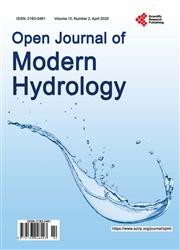Estimation of Unit Flood Discharge for Various Land Use Types with a Focus on Urbanization
引用次数: 3
Abstract
We proposed unit flood discharge model that defined as the discharge into end-order (smallest) drainage canals. The discharge acts an important role for estimating regional flooding by big rainfall events which leading roughly estimation of flood discharge associated with land use changes as urbanization. In some areas of Japan, increased urbanization with insufficient drainage canal capacity has led to increasingly frequent flooding and flood damage. The aim of this study was to investigate the effect of urbanization on unit flood discharge using a runoff model for the Tedori River alluvial fan area, Japan. The discharge was studied as collecting runoff from paddy fields, upland crop fields, and residential lots. A runoff model for various land use types in the study area was developed using actual and physical properties of the runoff sites, and parameters for paddy fields. The model was tested using 54 big events and inputted those. The maximum total runoff ratio among different land use types was observed for residential lots, and the ratio remained relatively constant across different flood events. The minimum total runoff ratio was observed for irrigated paddy fields. There was a positive relationship between the total runoff ratio and total precipitation for all land use types. Whereas, the relationship between the peak runoff ratio and peak precipitation was variable. The runoff analysis was carried out using 60-min and 10-min precipitation data. For agricultural land, data for both intervals produced similar results.以城市化为中心的不同土地利用类型的单位洪流量估算
我们提出了单元洪水流量模型,将其定义为流向末端(最小)排水渠的流量。该流量在大降雨事件的区域洪水估算中起着重要作用,从而对城市化等土地利用变化相关的洪流量进行了粗略估算。在日本的一些地区,随着城市化的加剧,排水渠容量不足,导致洪水和洪水破坏日益频繁。本研究以日本Tedori河冲积扇地区为研究对象,利用径流模型探讨城市化对单位洪流量的影响。研究了水田、旱地和居民点径流的排放。利用径流场的实际和物理特性以及稻田的参数,建立了研究区不同土地利用类型的径流模型。该模型使用54个大事件进行了测试,并输入了这些事件。在不同土地利用类型中,住宅用地的总径流比最大,且该比值在不同的洪涝事件中保持相对恒定。灌溉水田的总径流比最小。各土地利用类型的总径流量与总降水量均呈显著正相关。而峰值径流比与峰值降水量之间的关系是可变的。径流分析采用60 min和10 min降水数据进行。对于农业用地,这两个区间的数据得出了相似的结果。
本文章由计算机程序翻译,如有差异,请以英文原文为准。
求助全文
约1分钟内获得全文
求助全文

 求助内容:
求助内容: 应助结果提醒方式:
应助结果提醒方式:


